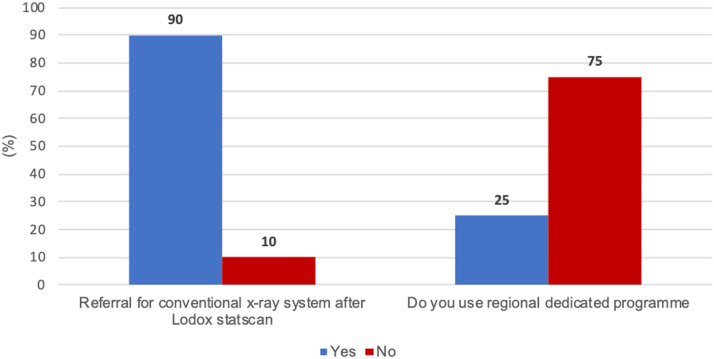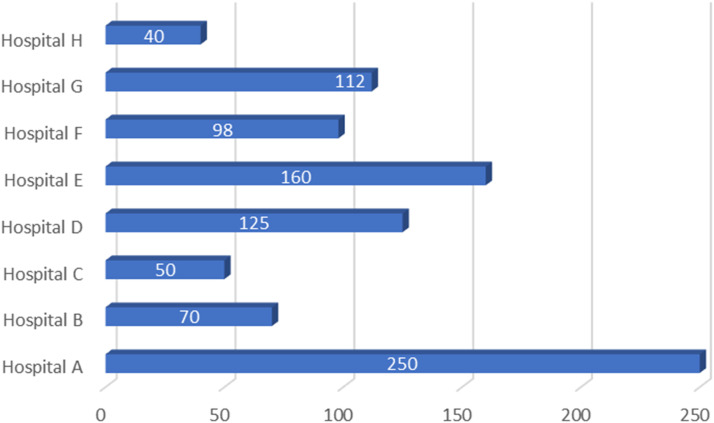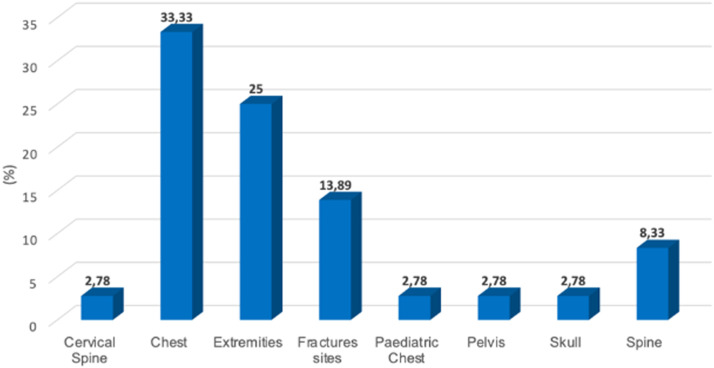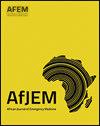下载PDF
{"title":"An investigation into the use of Full-body Low Dose X-rays Imaging system in South Africa: Radiographer's perspective","authors":"Muchui Julius Thambura","doi":"10.1016/j.afjem.2023.05.009","DOIUrl":null,"url":null,"abstract":"<div><h3>Introduction</h3><p>A low dose x-rays alias Lodox© statscan was originally developed in South Africa to detect smuggled diamonds in the mines. Later, hospital trauma units began to use it as a screening tool for gross pathology on trauma patients. This imaging system became popular because of its use of low radiation doses and its ability to perform anterior posterior (head to toe image) image in under 13 seconds. Anecdotal evidence confirms that patients were referred for additional regional images on conventional x-ray systems after Lodox imaging. Thus, patients were subjected to additional ionising radiation, long waiting times as well as additional charges for secondary radiological examinations.</p></div><div><h3>Objective</h3><p>This research aimed at investigating the extent to which Lodox was used in trauma units (n=28) in South Africa.</p></div><div><h3>Method</h3><p>In this descriptive cross-sectional research. researcher invited one radiographer from each of the 28 hospitals in South Africa that were using Lodox.</p></div><div><h3>Results</h3><p>Out of twenty radiographers who responded, it was found that most hospitals were referring patients for additional conventional x-ray images (Figure 1); for example, for chest x-rays. This was done despite the patient having undergone radiological procedures and examinations by the Lodox imaging system that was similar to those performed by conventional x-ray systems.</p></div><div><h3>Conclusion</h3><p>Lodox was used for a successful diagnosis Thus, researcher recommends an imaging protocol for Lodox to be developed for guiding the referral of patients after the Lodox scanning has been performed.</p></div>","PeriodicalId":48515,"journal":{"name":"African Journal of Emergency Medicine","volume":"13 3","pages":"Pages 166-170"},"PeriodicalIF":1.4000,"publicationDate":"2023-09-01","publicationTypes":"Journal Article","fieldsOfStudy":null,"isOpenAccess":false,"openAccessPdf":"https://www.ncbi.nlm.nih.gov/pmc/articles/PMC10491940/pdf/","citationCount":"0","resultStr":null,"platform":"Semanticscholar","paperid":null,"PeriodicalName":"African Journal of Emergency Medicine","FirstCategoryId":"3","ListUrlMain":"https://www.sciencedirect.com/science/article/pii/S2211419X23000289","RegionNum":4,"RegionCategory":"医学","ArticlePicture":[],"TitleCN":null,"AbstractTextCN":null,"PMCID":null,"EPubDate":"","PubModel":"","JCR":"Q3","JCRName":"EMERGENCY MEDICINE","Score":null,"Total":0}
引用次数: 0
引用
批量引用
Abstract
Introduction A low dose x-rays alias Lodox© statscan was originally developed in South Africa to detect smuggled diamonds in the mines. Later, hospital trauma units began to use it as a screening tool for gross pathology on trauma patients. This imaging system became popular because of its use of low radiation doses and its ability to perform anterior posterior (head to toe image) image in under 13 seconds. Anecdotal evidence confirms that patients were referred for additional regional images on conventional x-ray systems after Lodox imaging. Thus, patients were subjected to additional ionising radiation, long waiting times as well as additional charges for secondary radiological examinations.
Objective This research aimed at investigating the extent to which Lodox was used in trauma units (n=28) in South Africa.
Method In this descriptive cross-sectional research. researcher invited one radiographer from each of the 28 hospitals in South Africa that were using Lodox.
Results Out of twenty radiographers who responded, it was found that most hospitals were referring patients for additional conventional x-ray images (Figure 1); for example, for chest x-rays. This was done despite the patient having undergone radiological procedures and examinations by the Lodox imaging system that was similar to those performed by conventional x-ray systems.
Conclusion Lodox was used for a successful diagnosis Thus, researcher recommends an imaging protocol for Lodox to be developed for guiding the referral of patients after the Lodox scanning has been performed.
对南非全身低剂量x射线成像系统使用的调查:放射技师的观点
简介一种低剂量x射线,别名Lodox©statscan,最初在南非开发,用于探测矿山中的走私钻石。后来,医院创伤科开始将其作为创伤患者大体病理学的筛查工具。这种成像系统之所以流行,是因为它使用了低辐射剂量,并且能够在13秒内进行前后(从头到脚的图像)成像。轶事证据证实,在Lodox成像后,患者被转诊到常规x射线系统上进行额外的区域成像。因此,患者受到额外的电离辐射、漫长的等待时间以及二次放射学检查的额外费用。目的本研究旨在调查Lodox在南非创伤科(n=28)的使用情况。方法在本描述性横断面研究中。研究人员邀请了来自南非28家使用洛多克斯的医院的一名放射技师。结果在20名有反应的放射技师中,发现大多数医院都在推荐患者接受额外的常规x射线图像(图1);例如用于胸部x射线。尽管患者已经接受了与传统x射线系统类似的Lodox成像系统的放射学程序和检查,但还是进行了这项检查。结论洛多克斯用于成功诊断。因此,研究人员建议制定洛多克斯的成像方案,以指导患者在进行洛多克斯扫描后的转诊。
本文章由计算机程序翻译,如有差异,请以英文原文为准。




 求助内容:
求助内容: 应助结果提醒方式:
应助结果提醒方式:


